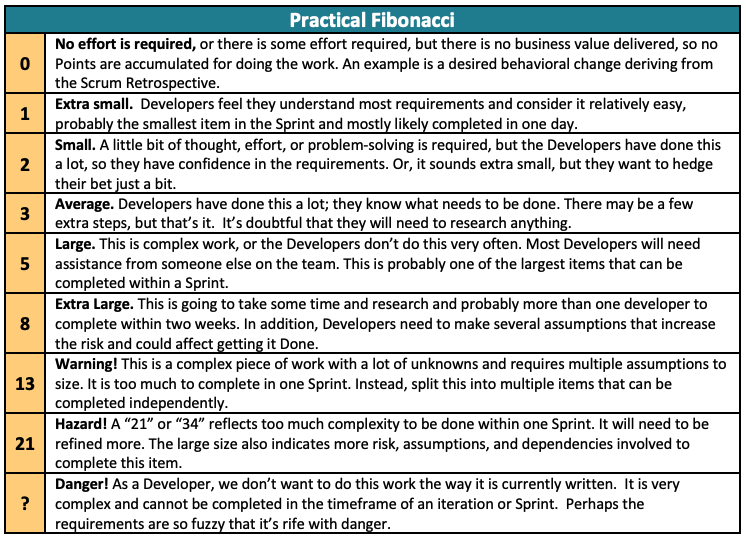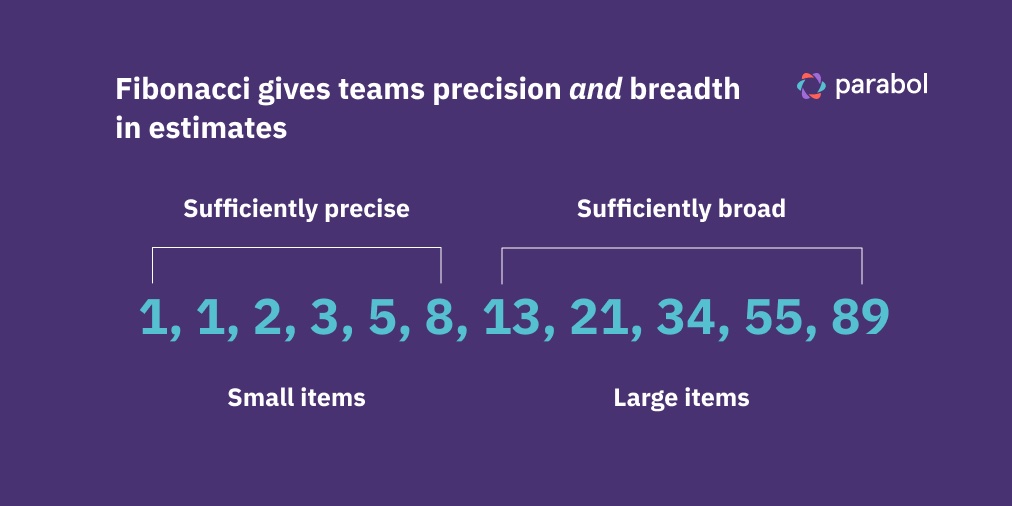Understanding Fibonacci Scoring: A Comprehensive Guide

In the world of scoring systems, one method that has gained significant attention is Fibonacci Scoring, or Fibonacci Agile Estimation. This article aims to provide a comprehensive guide to understanding Fibonacci Scoring, including its origins, fundamentals, application, benefits, limitations, and a comparison with other scoring systems.
{{resources-component-1}}
The Origins of Fibonacci Scoring
The roots of Fibonacci Scoring can be traced back to the famous mathematical sequence called the Fibonacci sequence. This sequence, discovered by the Italian mathematician Leonardo Fibonacci in the 13th century, starts with 0 and 1, and each subsequent number is the sum of the two preceding numbers. The significance of the Fibonacci sequence lies in its appearance in various natural phenomena.
Fibonacci Scoring is derived from this sequence and takes advantage of its unique mathematical properties to assign scores or values to different elements in a system.
The Fibonacci Sequence and its Significance
The Fibonacci sequence has fascinated mathematicians and scientists for centuries due to its occurrence in nature. It can be observed in the growth patterns of plants, the spiral arrangement of leaves, and the proportions of animal body parts.
For example, the arrangement of seeds in a sunflower follows a Fibonacci pattern. The number of spirals in one direction is often a Fibonacci number, while the number of spirals in the opposite direction is usually a neighboring Fibonacci number. This pattern ensures optimal exposure to sunlight for each seed, maximizing the plant's chances of survival and reproduction.

In addition to plants, the Fibonacci sequence can also be seen in the spiral shells of snails, the branching patterns of trees, and the arrangement of petals in flowers. These natural occurrences highlight the underlying order and harmony found in the Fibonacci sequence.
By leveraging the Fibonacci sequence, Fibonacci Scoring seeks to capture the inherent patterns and relationships present in various systems and use them as a basis for assigning scores that reflect their relative importance or priority.
The Adoption of Fibonacci Scoring in Various Fields
Over time, Fibonacci Scoring has found applications in different fields, including project management, risk assessment, and decision-making processes. Its ability to incorporate the natural order and proportionality makes it a valuable tool for these disciplines.
Project managers have embraced Fibonacci Scoring to prioritize tasks based on their significance and complexity. By assigning Fibonacci scores to different tasks, project managers can ensure that resources are allocated efficiently and that the most critical tasks receive appropriate attention.
Similarly, risk assessment professionals utilize Fibonacci Scoring to evaluate and rank risks based on their potential impact and probability. By assigning Fibonacci scores to different risks, they can prioritize mitigation efforts and allocate resources effectively.
In decision-making processes, Fibonacci Scoring can help individuals or teams weigh different options and make informed choices. By assigning scores to various factors or criteria, decision-makers can objectively evaluate the relative importance of each option and make decisions based on a well-defined scoring system.
Overall, Fibonacci Scoring offers a unique approach to assigning scores or values in various fields. Its foundation in the Fibonacci sequence and its connection to natural phenomena make it a compelling and effective tool for capturing the inherent patterns and relationships in complex systems.
The Fundamentals of Fibonacci Scoring
To understand Fibonacci Scoring, it is essential to grasp its basic principles and the mathematical framework that underlies it.
Fibonacci Scoring is a unique method that allows for a systematic and balanced approach to assessing and prioritizing elements within a given system. By following a simple set of principles and utilizing the mathematical foundation of the Fibonacci sequence, this scoring system ensures a natural progression of importance or priority.
Basic Principles of Fibonacci Scoring
At its core, Fibonacci Scoring follows a simple set of principles. The scores assigned to different elements progressively increase based on the Fibonacci sequence, ensuring a natural progression of importance or priority.
Imagine a scenario where you need to prioritize tasks in a project. With Fibonacci Scoring, you can assign scores such as 1, 2, 3, 5, 8, 13, and so on, where each number represents the sum of the previous two numbers in the sequence. This approach allows for a more nuanced and balanced assessment of the tasks, considering both their individual significance and their relationship to one another.
For instance, if you have two tasks with scores of 2 and 3, the gap between them signifies a moderate difference in importance. However, if the scores are 3 and 5, the gap widens, indicating a more significant disparity in priority.
The Mathematical Framework Behind Fibonacci Scoring
The mathematical foundation of Fibonacci Scoring lies in the inherent properties of the Fibonacci sequence. Its recursive nature and the relationship between consecutive numbers allow for a systematic and balanced scoring approach.
The Fibonacci sequence starts with two initial values, typically 0 and 1. Each subsequent number in the sequence is the sum of the two preceding numbers. This pattern continues indefinitely, resulting in a sequence that goes like this: 0, 1, 1, 2, 3, 5, 8, 13, 21, and so on.
By utilizing this mathematical framework, Fibonacci Scoring provides a structured and objective method for assessing and prioritizing elements within a given system. The sequence's inherent properties ensure that the scoring system maintains a balanced progression, avoiding sudden jumps or arbitrary assignments of importance.

Furthermore, the Fibonacci sequence's recursive nature allows for a flexible and scalable scoring system. As the sequence continues indefinitely, it can accommodate an expanding range of elements, ensuring that new additions to the system can be seamlessly integrated into the scoring process.
In conclusion, Fibonacci Scoring offers a unique and effective approach to assessing and prioritizing elements within a system. By following its basic principles and leveraging the mathematical framework of the Fibonacci sequence, this scoring system provides a structured and balanced method that can be applied to various domains, from project management to decision-making processes.
The Application of Fibonacci Scoring
One of the key strengths of Fibonacci Scoring is its versatility and applicability in various domains. This section explores its practical use in project management and risk assessment.
Fibonacci Scoring is a powerful tool that can be utilized in a wide range of applications. Its unique approach allows for a systematic and objective evaluation of different elements, enabling professionals to make informed decisions. Let's delve deeper into how Fibonacci Scoring can be applied in project management and risk assessment.
Fibonacci Scoring in Project Management
When managing a project, it is crucial to prioritize tasks and allocate resources effectively. Fibonacci Scoring allows project managers to determine the relative importance of different project elements, ensuring that efforts are focused on the most critical aspects.
With Fibonacci Scoring, project managers assign scores to each task based on its significance. The scoring system follows the Fibonacci sequence, where each number is the sum of the two preceding ones (1, 2, 3, 5, 8, 13, and so on). This sequence reflects the natural progression of importance, with each subsequent number representing a higher level of significance.
By using Fibonacci scores, project managers can align their team's efforts with the overall project objectives and make informed decisions based on the significance of each task. This scoring system provides a clear and objective framework for prioritization, ensuring that valuable resources are allocated where they are most needed.
Fibonacci Scoring in Risk Assessment
Risk assessment involves identifying, analyzing, and evaluating potential risks to minimize their impact on an organization or project. Fibonacci Scoring provides a systematic approach to rank risks based on their potential severity and likelihood.
Similar to its application in project management, Fibonacci Scoring in risk assessment involves assigning scores to different risks. The severity and likelihood of each risk are evaluated, and a Fibonacci score is assigned accordingly. This scoring system allows risk assessment professionals to prioritize mitigation strategies and allocate resources accordingly, ensuring the most significant risks are addressed first.
By utilizing Fibonacci Scoring, risk assessment professionals can effectively manage risks by focusing on those with the highest scores. This approach ensures that resources are utilized efficiently, and potential threats are mitigated in a strategic and systematic manner.
In conclusion, Fibonacci Scoring is a versatile and powerful tool that finds its application in project management and risk assessment. By providing a structured framework for prioritization and evaluation, it enables professionals to make informed decisions and allocate resources effectively. Whether it is managing a complex project or assessing potential risks, Fibonacci Scoring proves to be an invaluable asset in various domains.
The Benefits and Limitations of Fibonacci Scoring
Fibonacci Scoring offers several advantages that make it a popular choice in various fields. However, it is crucial to acknowledge its limitations and potential drawbacks.
Advantages of Using Fibonacci Scoring
The main advantage of Fibonacci Scoring lies in its ability to capture the inherent patterns and relationships present in natural systems. By aligning with these patterns, Fibonacci Scoring provides a more intuitive and harmonious approach to assigning scores or values.
Additionally, Fibonacci Scoring's systematic and balanced progression ensures that scores accurately reflect the relative importance or priority of different elements within a system.
Potential Drawbacks and Misunderstandings
While Fibonacci Scoring has proven effective in many scenarios, it is not without its limitations. One potential drawback is the subjective interpretation of scores. There can be variations in how individuals perceive the relative importance of different elements, which may lead to inconsistencies.
Moreover, Fibonacci Scoring may not be suitable for all situations. Its effectiveness depends on the context and the nature of the system being assessed. Thus, it is essential to consider its limitations and use it judiciously.
Fibonacci Scoring vs. Other Scoring Systems
Fibonacci Scoring can be contrasted with other scoring systems to better understand its unique characteristics and benefits.
Comparing Fibonacci Scoring with Linear Scoring
Linear Scoring, as the name suggests, assigns scores in a linear progression, with equal intervals between values. In contrast, Fibonacci Scoring follows a non-linear progression based on the Fibonacci sequence.
While Linear Scoring provides a straightforward and evenly distributed scale, Fibonacci Scoring incorporates the inherent patterns found in nature, resulting in a more harmonious and intuitive scoring system.
Fibonacci Scoring and Exponential Scoring: A Contrast
Exponential Scoring, like Fibonacci Scoring, deviates from linear progression by increasing values exponentially. However, exponential growth is characterized by a constant growth rate, while Fibonacci Scoring is based on a distinct sequence with increasing ratios.
Fibonacci Scoring's unique progression, derived from the Fibonacci sequence, offers a different perspective on scoring and can provide a more nuanced approach to prioritization.
Understanding Fibonacci Scoring provides valuable insights into its origins, fundamentals, applications, benefits, limitations, and comparisons with other scoring systems. Whether employed in project management or risk assessment, Fibonacci Scoring offers a systematic and intuitive approach to assigning scores that can enhance decision-making and maximize effectiveness in various fields.




